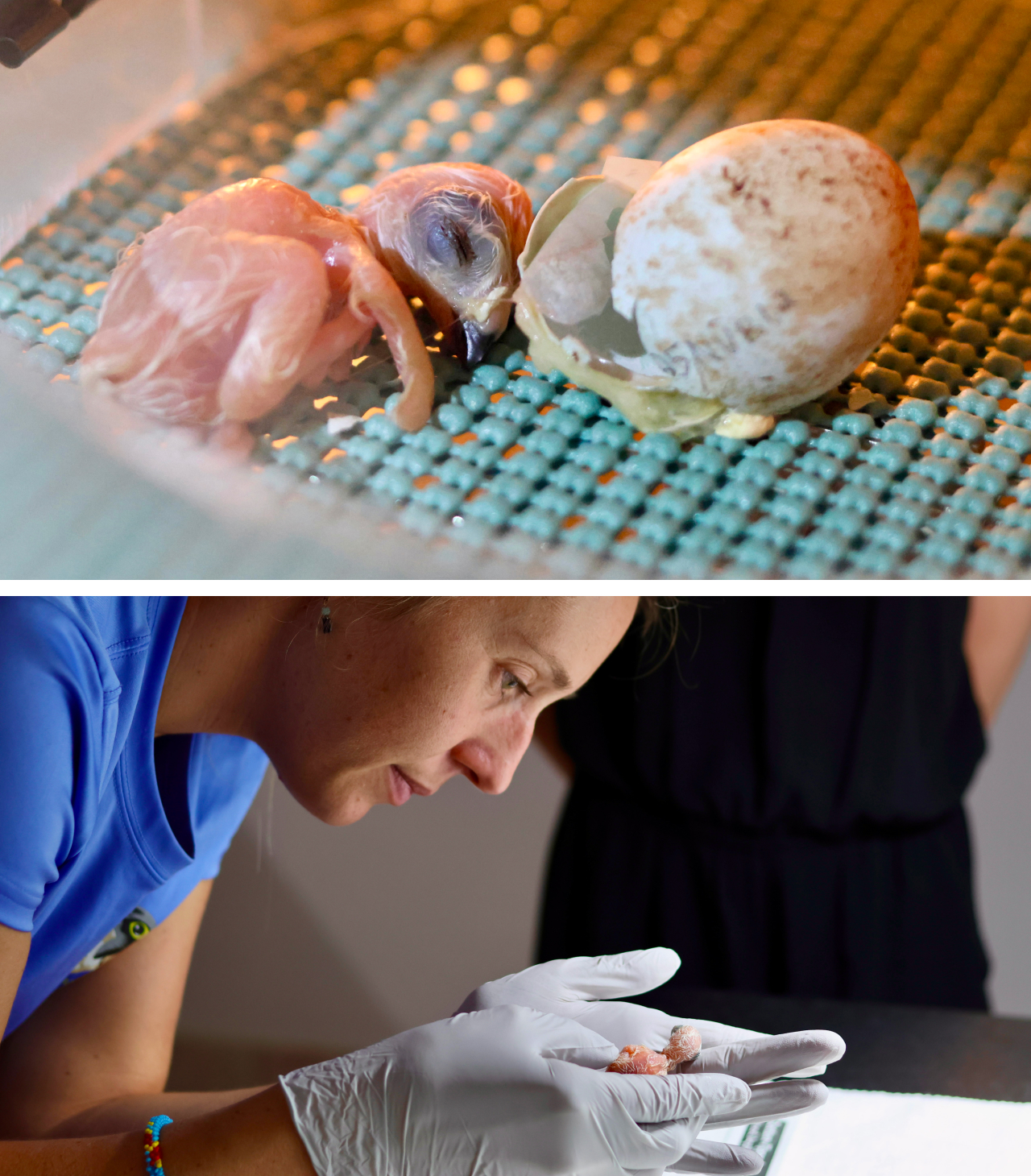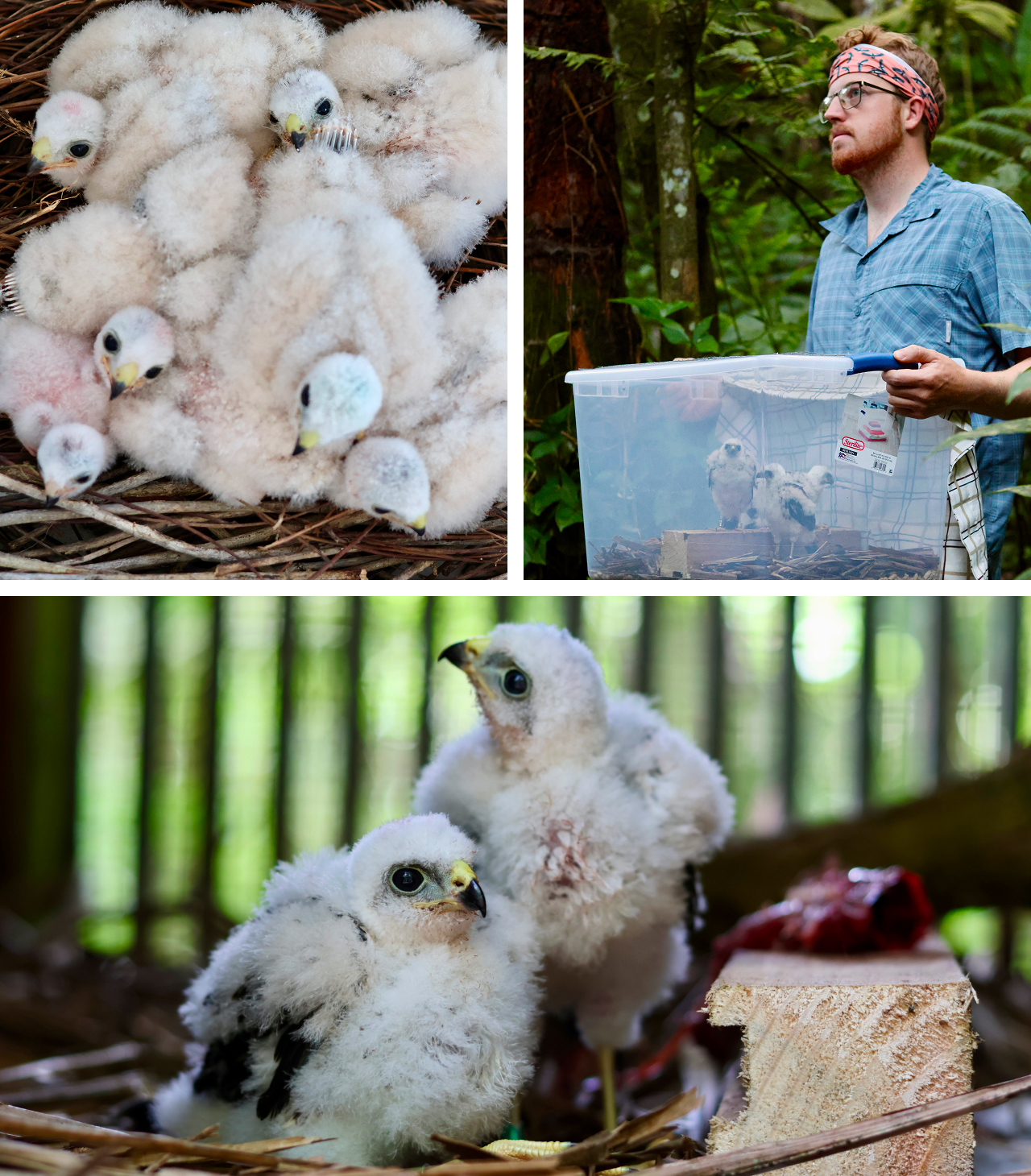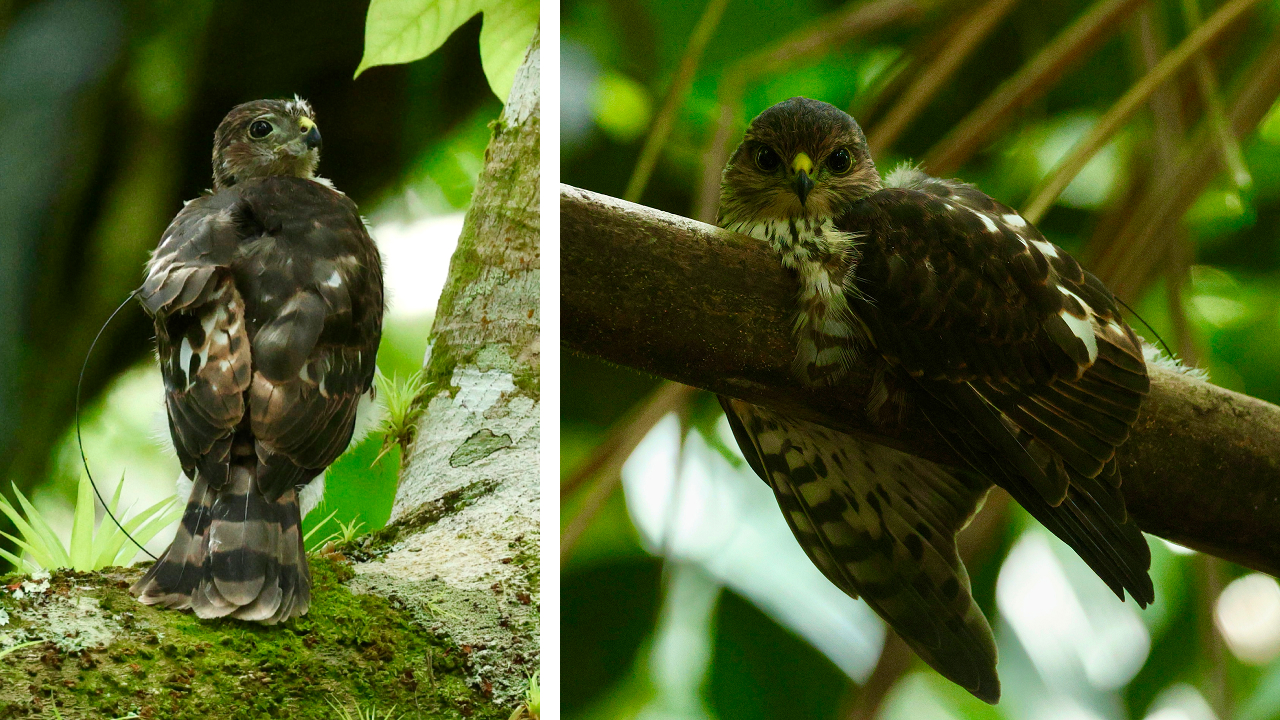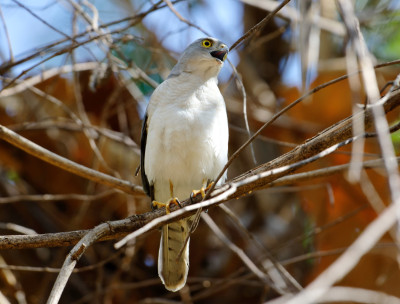
Hana Weaver
Revived Puerto Rico Propagation Program Celebrates First Successes
Exciting news from our Puerto Rico Program: for the first time since 2021, we have released hand-reared Puerto Rican Sharp-shinned Hawks back into the wild! After a three-year hiatus, we resumed our propagation efforts for these rare hawks in April, when our team removed four clutches of eggs from wild nests and moved them to our Puerto Rico propagation facility.
“Removing eggs from the wild does two things,” explains our Puerto Rico Program Director, Hana Weaver. “First, we ensure that the eggs are safe from wild threats. And secondly, the pairs will often lay another clutch of eggs. The end result is increased hawk productivity, with the goal of bolstering the population.”
“Of the 12 eggs collected, three did not hatch due to developmental complications,” reports Puerto Rico Propagation Biologist Brendan Burns (seen at top right below). “But the remaining nine hatched strong and healthy throughout the month of May.” As with most birds of prey, the nestlings grew and developed very quickly. “They weighed a mere 12 grams when they hatched, but by just 20 days old, they had nearly reached their adult weights. For males, that’s about 85 grams, while females tip the scales at nearly twice that!”
The first releases took place on June 1 and continued through the month as each nestling reached release age (at just 28–30 days old). The team reports that all nine have now been released and are doing exceptionally well so far, with some even successfully hunting lizards within just two weeks of returning to the wild.
“I want to recognize our partnering non-profit organization, Casa Pueblo, for the privilege of utilizing their property to release these hawks, and for housing our entire team in their cabins!” says Hana. “Casa Pueblo’s long history in environmental protection and community-managed forests has made them a unique and integral part of our successful releases.”
As of July 22, all of the hand-reared hawks are spending less and less time at the release site, and about half have successfully dispersed into the forests on their own. “We occasionally pick up signals from their transmitters, telling us that they are alive and active,” Hana says with a smile. Two of these birds, both males, are seen healthy and resting comfortably (one in a less orthodox posture than the other!) in the photos above, with the antennas from their transmitters visible on their backs. “I’m looking forward to resighting these birds in future years, hopefully as adult hawks, building nests of their own.”
Want to learn more? Read Casa Pueblo's article about the program here.









